-
7 USDEC strategies opening doors in China and Japan for U.S. dairy farmers
By Tom Vilsack September 17, 2019- Tweet
China waives a retaliatory tariff on U.S. permeate for feed, illustrating how addressing global problems can benefit our dairy farmers.
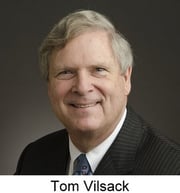 Editor's note: This blog post is based on an article that first appeared in MILK magazine. Secretary Vilsack made similar points in a letter to USDEC members.
Editor's note: This blog post is based on an article that first appeared in MILK magazine. Secretary Vilsack made similar points in a letter to USDEC members.
As our farmers look to the future, it makes sense to gaze across the Pacific Ocean, where consumers are adding dairy to their traditional Asian diets. Demand is increasing for cheese and dairy ingredients made from milk.
Asia's dairy problem: Farmers in these countries can't produce enough milk to fully meet the domestic demand.
Our U.S. dairy farmers produce an abundance of what Asia needs. That's why the checkoff-funded U.S. Dairy Export Council I oversee is vigorously knocking on doors of opportunity in Asia.
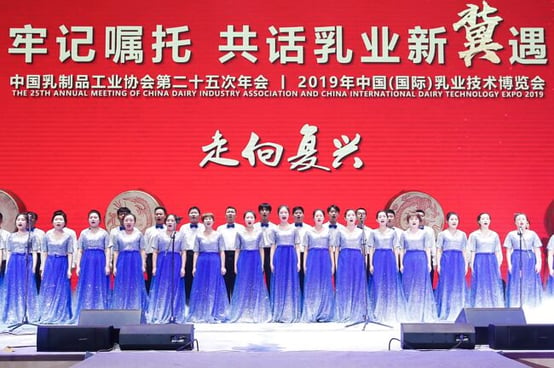
USDEC was one of several co-sponsors of the China Dairy Industry Association's annual meeting, a business gathering and spectacle in Shijiazhuang that showcased the increasing importance of dairy to the world's largest country.
What I experienced on an Aug. 28-Sept. 3 trip to China and Japan confirmed that our long-term strategies are on the right track. What's more, opportunities exist for immediate wins for our dairy farmers, even as our government continues trade talks with China and Japan.
Win for farmers: Tariff lifted on U.S. permeate
Effective today, China is waiving a retaliatory tariff on a nutritious U.S. dairy ingredient for pigs. Permeate for feed (protein content 2%-7% by weight, lactose content 76%-88%) sold under HS 04041000 will revert to its pre-retaliatory tariff rate of 2%.
This is just for permeate, not all U.S. dairy products and ingredients. But it's a significant breakthrough nonetheless. Our permeate can now compete on a level playing field in a nation that produced and consumed roughly half of the world’s pork last year. On my recent trip, I made the point to government officials that the Chinese can use our permeate to quicken the rebuilding of a pig herd decimated this year by African swine fever.
Trade policy challenges
China has a population of 1.4 billion, Japan 127 million. Together, that’s more than four times the number of mouths we feed in this country.
The potential for increasing our exports is obvious but trade policy issues pose challenges.
Most notably, Chinese retaliatory tariffs have been a weapon in a trade dispute with the United States, with our overall dairy exports to China falling 43% in the year since new tariffs began. In Japan, we see New Zealand and the EU seizing a competitive advantage through new free-trade agreements that tilt the playing field against us.
Multi-pronged approach
At USDEC, we utilize membership dues to tackle these challenges head-on, fighting for dairy-friendly trade policy in Washington, Beijing, Tokyo and other capital cities around the world.
We also have overseas boots on the ground paving the way for our exporting companies to do more business, thanks to generous checkoff support from Dairy Management Inc. and our state and regional dairy organizations.
The following strategies were on display during my recent trip:
Seven USDEC strategies in China and Japan
1. Keep building relationships.
In China I met with government officials at the Ministry of Finance and Commerce (MOFCOM) and addressed the China Dairy Industry Association. In the midst of a trade war, I realized there would be little interest in the usual discussion about the benefits of U.S. dairy products as ample, nutritious and safe. I decided to approach the meeting and prepare my presentation in a way that reflected our desire to maintain positive relationships that come up with win-win solutions.
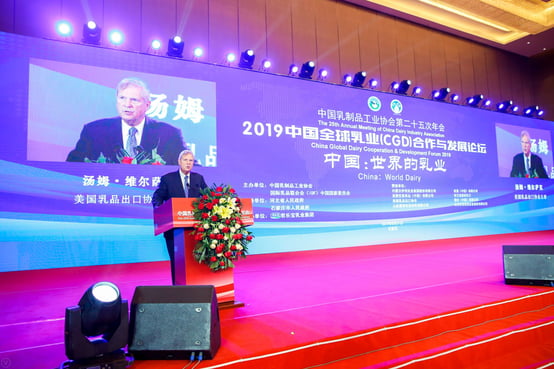
Speaking at the China Dairy Industry Association annual meeting, USDEC President and CEO Tom Vilsack encouraged collaboration between the U.S. and Chinese dairy industries.
2. Creatively solve problems.
In meetings and speeches, I offered a way the U.S. dairy industry can help China's pig herd recover. Research shows that more permeate given to piglets in a higher ratio results in faster growth. We also know that more whey protein given to lactating sows results in more pigs per sow.
After my return, I followed up with a letter. I'm pleased to say that on Sept. 11, the Chinese government said it is waiving its retaliatory tariff on U.S. permeate for feed use, effective today (Sept. 17). In a country where a plummeting supply of pork is inflating prices, USDEC found a path to address a significant problem.
This was and remains a team effort. USDEC staff in the U.S. and China have been working on a tariff exemption application for some time. In the coming weeks, USDEC will host two seminars in China about strategic approaches to using permeate to help the hog industry. If our permeate exports to China increase as expected, that's a win-win for China and our dairy farmers.
3. Emphasize our sustainability commitment.
I raised the challenge of climate change in China and the opportunity it presents to the global dairy industry. I spoke of the commitment our farmers to reduce emissions. In addition to helping the earth, sustainability can give us a global marketing advantage.
4. Encourage free-trade agreements.
When the EU completed its free trade agreement (FTA) with Japan and when the Trans-Pacific Partnership (without the U.S.) went into place, our competitors in the EU and New Zealand gained an immediate competitive advantage. Many of their tariffs fell to zero. Ours didn’t, and our tariffs remained in place. USDEC continues to push for a free-trade agreement to rectify this and I am hopeful that a “mini” FTA recently announced will soon go into effect in Japan so the world's largest cheese exporter can trade freely with the world's largest cheese importer.
5. Develop win-win partnerships.Curves runs nearly 2,000 women’s fitness centers in Japan with a focus on seniors. To combine exercise with nutrition, many members get a monthly supply of whey protein. Nearly half of the whey protein sold by Curves comes from the United States. The company is now opening fitness centers for men in Japan and is expanding to other Asian markets. Our U.S. dairy ingredients will go with them.
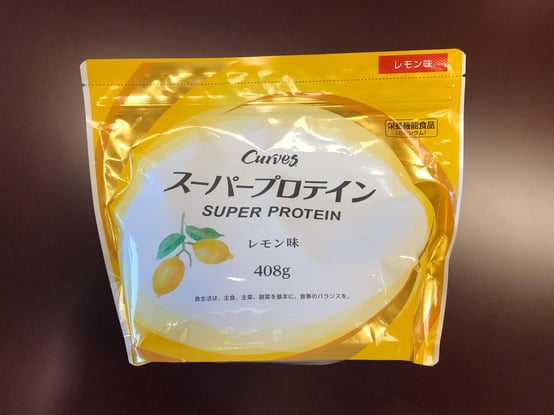
Many Japanese consumers are focused on health and wellness, which creates demand for dairy ingredients like whey protein.
6. Promote the quality and heritage of U.S. cheeses.
The Japan cheese market continues to grow, hitting record imports for four years in a row. My visit with Chesco (owner of 10 cheese stores and a marketer to high-end grocery and department stores in Japan) convinced me a new program with them will succeed. Later this year, Chesco will introduce up to eight American cheeses in high-end grocery and department stores.
You may have heard what happened when Costco opened its first location in in mainland China on Aug. 27. Its Shanghai store was so inundated with eager shoppers it had to close due to security concerns. The next day, Costco began limiting the number of shoppers to 2,000 at a time.
USDEC staff was at the grand opening celebrating a new partnership with Costco that we brokered, resulting in seven U.S. cheeses put on display for Chinese consumers.
Customers lucky enough to get into the Costco grand opening in Shanghai saw cheeses made in the U.S. from Belgioioso, Sartori, Tillamook, Pacific Cheese, Saputo, Schuman Inc. and Lactalis -- thanks in part to a new partnership facilitated by USDEC. #USDairyChina #UndeniablyDairy pic.twitter.com/ZjyxMXMzdh
— U.S. Dairy Exporter (@USDairyExporter) September 3, 2019
7. Teach future chefs about U.S. cheeses.At Hattori Nutrition College in Tokyo, 115 up-and- coming chefs finished the first level in our USA Cheese Specialist™ Certification Program. We are building a generation of chefs and food industry leaders in Japan and elsewhere who will be educated in the quality, versatility and capacity of U.S. cheeses.
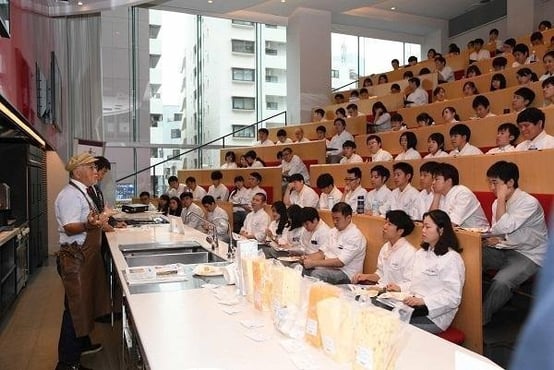 Yukio Hattori of "Iron Chef" fame addresses students at Hattori Nutrition College.
Yukio Hattori of "Iron Chef" fame addresses students at Hattori Nutrition College.
Competing to win for dairy farmers
To sum it up, what I saw on my recent trip increased my confidence that smart strategies are putting U.S. dairy farmers and our entire industry in a position where we will compete to win in China, Japan and around the world.
Tom Vilsack is president and CEO of the U.S. Dairy Export Council.
Learn more:
- Vilsack optimistic about exports after China, Japan trips
- Travelogue: Vilsack takes U.S. Dairy message to China, Japan
- Vilsack in China: U.S. dairy industry building relationships for ‘long haul’
- (8 Photos) Chinese Student Creativity Shines at USDEC Dairy Competition with Jiangnan University
- Tariffs as High as 45% Inflict Risk on Chinese Food Companies, Pain on U.S. Dairy Farmers
- (12 Photos) U.S. Ambassador Sends Goodwill Message to China's Food Industry at Conference, USDEC Reception
- Prediction: China will Become the World's Big Cheese
- U.S. Dairy's Momentum in China Threatened
- U.S.-China Dairy Partnership Launched to Meet Future Demand for Nutritious Products (VIDEO)
- USDEC Goes to China to Expand Dairy Trade
Subscribe to the U.S. Dairy Exporter Blog
The U.S. Dairy Export Council fosters collaborative industry partnerships with processors, trading companies and others to enhance global demand for U.S. dairy products and ingredients. USDEC is primarily supported by Dairy Management Inc. through the dairy farmer checkoff. How to republish this post.
10 Most Recent Posts
Most Popular Posts in Past Year
Index of Posts by Topic
- #GotDairyJobs (4)
- About USDEC (66)
- Africa (6)
- Australia (4)
- Blog (8)
- Brazil (4)
- Canada (20)
- Central America (1)
- Cheese (58)
- Chile (1)
- China (54)
- Common food names (7)
- Company News (19)
- Consistent Supply (1)
- Crisis Management (3)
- Cuba (2)
- Dairy (6)
- Dairy checkoff (9)
- Dairy Ingredients (5)
- Dairy Management Inc. (2)
- Dairy Resources (1)
- Dairy Supply Chain (1)
- Dairy Trends (5)
- Documentation (3)
- EU (24)
- Experts on Dairy Exports (4)
- Exporter of the Year (2)
- Exports (24)
- Farmer leaders (1)
- Farming (38)
- Food Aid (8)
- Food Safety (8)
- Foodservice (3)
- Free trade agreements (34)
- Future trends (1)
- Geographical Indications (GIs) (10)
- Global Marketing (86)
- Global Shipping Crisis (1)
- Got Jobs? (9)
- Indonesia (1)
- Innovation (17)
- Japan (17)
- Krysta Harden (1)
- Market Access (25)
- Market Conditions (268)
- Member Services (17)
- Mexico (41)
- Middle East (9)
- Middle East & North Africa (3)
- Middle East/North Africa (9)
- Milk (4)
- Milk Protein Concentrate (MPC) (2)
- New Zealand (11)
- Next5% (20)
- Nonfat Dry Milk/Skim Milk Powder (8)
- Nutrition (19)
- Product Innovation (6)
- Protein (4)
- Regulations (5)
- Research & Data (326)
- Russia (3)
- Singapore (10)
- South America (8)
- South Korea (10)
- Southeast Asia (25)
- Strategic Insights (1)
- Supply (1)
- Sustainability (26)
- Technology (2)
- ThinkUSADairy (5)
- TPM23 (1)
- TPP (13)
- Traceability (8)
- Trade Barriers (5)
- Trade Data (7)
- Trade Policy (72)
- TTIP (5)
- UHT Milk (7)
- USMCA (2)
- Vietnam (4)
- Whey (6)
- Whey Ingredients (2)
- Whey products (10)
- Whole Milk Powder (WMP) (3)
- World Dairy Expo (1)
- World Milk Day (1)
- Yogurt (1)
Index of Posts by Date, Author
- June 2021 (13)
- March 2015 (12)
- September 2015 (12)
- April 2015 (11)
- December 2015 (11)
- March 2014 (10)
- February 2015 (10)
- October 2015 (10)
- October 2014 (9)
- June 2015 (9)
- July 2015 (9)
- November 2015 (9)
- March 2016 (9)
- October 2019 (9)
- September 2013 (8)
- May 2015 (8)
- August 2015 (8)
- January 2016 (8)
- February 2016 (8)
- March 2017 (8)
- December 2018 (8)
- May 2019 (8)
- December 2019 (8)
- June 2014 (7)
- November 2016 (7)
- May 2017 (7)
- May 2018 (7)
- July 2020 (7)
- June 2023 (7)
- July 2016 (6)
- August 2018 (6)
- October 2018 (6)
- November 2018 (6)
- February 2019 (6)
- June 2019 (6)
- August 2019 (6)
- March 2020 (6)
- April 2020 (6)
- June 2020 (6)
- June 2022 (6)
- February 2014 (5)
- June 2016 (5)
- August 2016 (5)
- September 2016 (5)
- December 2016 (5)
- February 2017 (5)
- July 2017 (5)
- October 2017 (5)
- January 2018 (5)
- April 2018 (5)
- June 2018 (5)
- July 2018 (5)
- September 2018 (5)
- January 2019 (5)
- March 2019 (5)
- April 2019 (5)
- July 2019 (5)
- September 2019 (5)
- November 2019 (5)
- January 2020 (5)
- August 2020 (5)
- October 2020 (5)
- April 2021 (5)
- January 2022 (5)
- May 2013 (4)
- September 2014 (4)
- April 2016 (4)
- May 2016 (4)
- October 2016 (4)
- January 2017 (4)
- April 2017 (4)
- June 2017 (4)
- August 2017 (4)
- September 2017 (4)
- December 2017 (4)
- February 2018 (4)
- February 2020 (4)
- May 2020 (4)
- February 2022 (4)
- September 2022 (4)
- April 2023 (4)
- December 2023 (4)
- November 2017 (3)
- March 2018 (3)
- September 2020 (3)
- December 2020 (3)
- February 2021 (3)
- May 2021 (3)
- August 2021 (3)
- December 2021 (3)
- March 2022 (3)
- April 2022 (3)
- May 2022 (3)
- October 2022 (3)
- December 2022 (3)
- May 2023 (3)
- July 2023 (3)
- November 2023 (3)
- March 2011 (2)
- June 2011 (2)
- September 2011 (2)
- March 2012 (2)
- June 2012 (2)
- July 2012 (2)
- March 2013 (2)
- July 2013 (2)
- November 2020 (2)
- January 2021 (2)
- March 2021 (2)
- July 2021 (2)
- September 2021 (2)
- October 2021 (2)
- November 2021 (2)
- July 2022 (2)
- August 2022 (2)
- January 2023 (2)
- March 2023 (2)
- October 2023 (2)
- January 2024 (2)
- February 2024 (2)
- April 2024 (2)
- June 2024 (2)
- July 2024 (2)
- November 2024 (2)
- December 2024 (2)
- February 2025 (2)
- June 2025 (2)
- July 2025 (2)
- September 2025 (2)
- November 2025 (2)
- January 2010 (1)
- February 2010 (1)
- March 2010 (1)
- April 2010 (1)
- May 2010 (1)
- June 2010 (1)
- July 2010 (1)
- August 2010 (1)
- September 2010 (1)
- October 2010 (1)
- November 2010 (1)
- December 2010 (1)
- January 2011 (1)
- February 2011 (1)
- April 2011 (1)
- May 2011 (1)
- July 2011 (1)
- August 2011 (1)
- October 2011 (1)
- November 2011 (1)
- December 2011 (1)
- January 2012 (1)
- February 2012 (1)
- April 2012 (1)
- August 2012 (1)
- September 2012 (1)
- October 2012 (1)
- November 2012 (1)
- December 2012 (1)
- January 2013 (1)
- February 2013 (1)
- April 2013 (1)
- June 2013 (1)
- August 2013 (1)
- October 2013 (1)
- November 2013 (1)
- December 2013 (1)
- January 2014 (1)
- April 2014 (1)
- May 2014 (1)
- November 2022 (1)
- February 2023 (1)
- August 2023 (1)
- September 2023 (1)
- March 2024 (1)
- May 2024 (1)
- August 2024 (1)
- September 2024 (1)
- October 2024 (1)
- January 2025 (1)
- March 2025 (1)
- April 2025 (1)
- May 2025 (1)
- August 2025 (1)
- December 2025 (1)
- USDEC (183)
- USDEC Staff (163)
- Alan Levitt (119)
- Tom Suber (41)
- Margaret Speich (22)
- Marc A.H. Beck (15)
- Vikki Nicholson-West (11)
- Angélique Hollister (11)
- Tom Vilsack (8)
- Jaime Castaneda (7)
- Matt McKnight (7)
- Véronique Lagrange (7)
- Margaret Speich and Mark O'Keefe (7)
- Ross Christieson (7)
- Paul Rogers (6)
- Shawna Morris (5)
- William Loux (5)
- Alan Levitt and Marc Beck (5)
- Krysta Harden (4)
- USDEC Communications (3)
- Kristi Saitama (3)
- Marilyn Hershey (3)
- Brad Gehrke (3)
- Tom Quaife (2)
- Nick Gardner (2)
- Jim Mulhern (2)
- Alan Levitt and William Loux (2)
- Kara McDonald (2)
- Luke Waring (2)
- Merle McNeil (2)
- Andrei Mikhalevsky (1)
- Rodrigo Fernandez (1)
- Dermot Carey (1)
- Jeremy Travis (1)
- Annie Bienvenue (1)
- Ross Christieson and Shawna Morris (1)
- Becky Nyman (1)
- Paul Rogers and Tom Quaife (1)
- Rick Ortman (1)
- Tony Rice (1)
- Barbara O’Brien (1)
- Paul Rogers and Mark O'Keefe (1)
- Dalilah Ghazalay (1)
- Amy Wagner (1)
- Mitchell Bowling (1)
- Erica Louder (1)
- Brad Scott (1)
- Amy Foor (1)
- Scott Lantz (1)
- Sandra Benson (1)
- Errico Auricchio (1)
- Jaclyn Krymowski (1)
- Krysta Harden, USDEC President and CEO (1)
.png)

